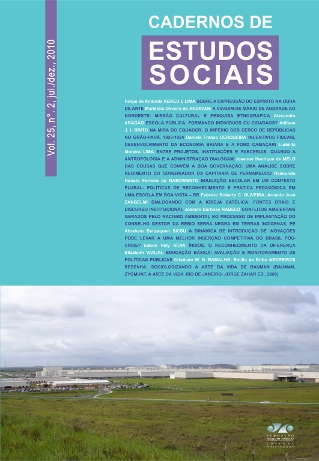Na mira do equador: O Império sob cerco de repúblicas no Grão-Pará, 1823-1824
Resumo
Durante grande parte do ano de 1824, o Grão-Pará esteve na mira da revolução localizada no “norte” do Brasil, a chamada “Confederação do Equador”. A forte oposição ao projeto centralizador dos grupos dirigentes do Rio de Janeiro, contido principalmente na Constituição de 1824, fez emergir uma perigosa faixa de sedição que ia de Alagoas ao Ceará, colocando em pauta a fragilidade do Estado Imperial recém-nascido, baseado que estava em um frágil conceito de nação, pulverizado em diferentes projetos de futuro que, no limite, assumiam aspectos republicanos. A desagregação se apresentava como uma realidade bem mais plausível que a unidade. O Grão-Pará não esteve desligado dessa realidade, como muitas vezes foi colocado pela historiografia regional. A hipótese central deste estudo é a de que os tentáculos republicanos do Equador fizeram parte integrante da conjuntura política do extremo norte do Império, principalmente a partir das conexões construídas entre as populações “de cor” da tênue fronteira entre o Pará e o Maranhão, cuja expressão mais interessante se deu na revolta de agosto de 1824 no lugar de Turiaçú. Tateando nas margens da sociedade, onde as especificidades do cotidiano revelam muito sobre esse passado silenciado, procuramos discutir os possíveis projetos políticos construídos pelos indígenas, pretos e pardos amazônicos, a partir das informações que recebiam da conjuntura vivida no Ceará e em Pernambuco. Entre as densas matas do Turiaçú e a vila de Bragança, na chamada região do salgado paraense, o Império esteve sob o cerco de repúblicas diversas, onde o futuro esteve preso à inconstância e imprevisibilidade dos acontecimentos. Palavras-chave: Grão-Pará; Império brasileiro; História política; Confederação do Equador. During great part of the year of 1824, Grão-Pará was in the aiming of the revolution located in the “north” of Brazil, the call “Confederation of the Equator”. The strong opposition to the project centraliser of the leading groups of Rio de Janeiro, contained mainly in the Constitution of 1824, it made to emerge a dangerous band of sedição that went of Alagoas to the Ceará, placing in guideline the fragility of the just-born Imperial State, based that it was in a fragile concept of nation, sprayed in different projects of future that, in the limit, assumed republican aspects. The disaggregation if presented as a reality well more reasonable than the unit. Grão-Pará was not off of this reality, as many times were placed by the regional writing of history. The central hypothesis of this study is of that the republican tentáculos of the Equator had been integrant part of the conjuncture politics of the extremity north of the Empire, mainly from the connections constructed between the populations “of color” of the tenuous border between Pará and the Maranhão, whose more interesting expression if gave in the revolt of August of 1824 in the place of Turiaçú. Looking for in the edges of the society, where the especificidades of the daily one disclose very on this silenced past, we look for to argue the possible projects politicians constructed for the Amazonian aboriginals, black color and mediums brown, from the information that received from the conjuncture lived in the Ceará and Pernambuco. It enters the dense bushes of the Turiaçú and the village of Bragança, in the call region of the salty paraense, the Empire was under the wall of diverse republics, where the future was imprisoned to the not constant and not imprevisible of the events. Key words: Grão-Pará; Brazilian empire; History politics; Confederation of Equator.Downloads
Não há dados estatísticos.
Downloads
Publicado
06/16/2011
Como Citar
Brito, A. J. I. (2011). Na mira do equador: O Império sob cerco de repúblicas no Grão-Pará, 1823-1824. Cadernos De Estudos Sociais, 25(2). Recuperado de https://periodicos.fundaj.gov.br/CAD/article/view/1425
Edição
Seção
Artigos - número 2
Licença
Autores que publicam nesta revista concordam com os seguintes termos:
- Autores mantém e retém os direitos autorais. Os mesmos concedem à revista o direito de primeira publicação, com o trabalho simultaneamente licenciado sob a Licença Creative Commons Attribution que permite o compartilhamento do trabalho com reconhecimento da autoria e publicação inicial nesta revista.
- Autores têm autorização para assumir contratos adicionais separadamente, para distribuição não-exclusiva da versão do trabalho publicada nesta revista (ex.: publicar em repositório institucional ou como capítulo de livro), com reconhecimento de autoria e publicação inicial nesta revista.


